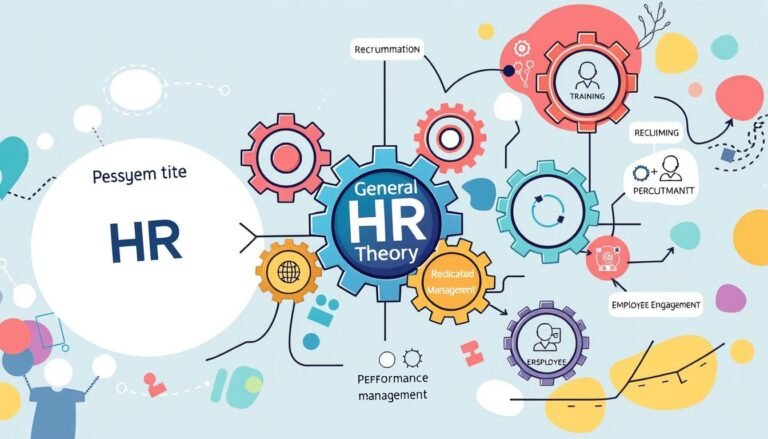Work-Life Balance and the Four-Day Work Week
The idea of a four-day work week is becoming more popular. It’s seen as a way to improve work-life balance and increase productivity. Recent tests have shown good results, making both workers and bosses interested.
In the UK, a big test involved 2,900 workers from 61 companies. It showed many benefits. Workers were happier, felt better, and had less stress. Amazingly, 92% of these companies want to keep the four-day week forever.
This change is shaking up old ways of working. It could be good for everyone. Companies that try flexible hours see better work and keep their best workers. For example, Microsoft’s Japan office saw a 40% jump in productivity with a four-day week.
Workers also gain a lot from this new way of working. In New Zealand, 78% of Perpetual Guardian’s staff found it easier to manage work and life. This leads to happier, more involved employees.
Key Takeaways
- 92% of companies in UK trials plan to continue the four-day work week
- Microsoft Japan saw a 40% productivity increase
- 78% of employees report better work-life balance
- 63% of businesses found it easier to attract and retain staff
- Four-day weeks can lead to reduced stress and improved well-being
Understanding Work-Life Balance
Work-life balance is key in today’s jobs. It’s about mixing work and personal life well. This balance helps avoid burnout and keeps mental health good.
Definition of Work-Life Balance
Work-life balance means finding a balance between work and personal life. It’s not just about spending equal time on both. It’s about feeling fulfilled in both areas. What balance means varies for everyone, based on their priorities and life stages.
Importance of Work-Life Balance
A good work-life balance is essential for well-being. It stops burnout, lowers stress, and boosts mental health. Research shows workers with a good balance are more productive and happy.
For example, 100% of Family Values @ Work staff loved their four-day workweek. They said it gave them more rest and flexibility.
Factors Affecting Work-Life Balance
Many things can affect work-life balance:
- Workload and hours
- Company culture
- Personal commitments
- Job flexibility
- Technology (enabling constant connectivity)
A South Korean study found long work hours can lead to anxiety and depression. This shows the need for manageable work hours for mental health and avoiding burnout.
Overview of the Four-Day Work Week
The four-day work week is becoming more popular as a new way to work. It aims to make life outside of work better while keeping productivity high.
Definition and Key Features
A four-day work week packs 40 hours into four days instead of five. This means longer days but an extra day off each week.
Historical Context and Adoption
The idea of a shorter work week isn’t new. But lately, it’s getting more attention. Countries like Belgium, Spain, and Japan have tried it and seen good results.
Current Trends in the Four-Day Work Week
Studies show more people are interested in this model. A big UK trial with 2,900 workers from 61 companies had great results:
- 92% of companies kept the four-day week
- 39% of employees felt less stressed
- 71% reported less burnout
- 54% found it easier to manage work and home life
These results show the benefits for both employers and employees. With more people working from home, the four-day week offers a new way to balance work and life.
| Aspect | Traditional Work Week | Four-Day Work Week |
|---|---|---|
| Work Days | 5 days | 4 days |
| Hours per Week | 40 hours | 32-40 hours |
| Days Off | 2 days | 3 days |
| Stress Levels | Higher | 39% reduction |
| Work-Life Balance | Challenging | Improved for 54% |
Benefits of a Four-Day Work Week
The four-day work week is becoming more popular. Companies see its benefits for work-life balance. Studies show it’s good for both employees and employers.
Enhanced Productivity
Reducing work hours can actually increase output. In trials worldwide, companies saw more work done without extra pay. This follows the 100-80-100 rule: 100% pay for 80% time, with 100% output.
Improved Employee Well-Being
A shorter work week boosts employee health and happiness. Workers feel less stressed and less burnt out. They enjoy better mental health.
The extra day off lets them do personal things. This improves their life and job satisfaction.
Attraction and Retention of Talent
The four-day model helps keep employees and attract new ones. Companies see lower turnover and more interest from job seekers. This is key in today’s job market, where balance is important.
| Metric | Before 4-Day Week | After 4-Day Week |
|---|---|---|
| Employee Stress Levels | High | Significantly Reduced |
| Productivity | Baseline | Maintained or Increased |
| Employee Retention | Standard | Improved |
| Work-Life Balance | Challenged | Enhanced |
The four-day work week is a win for everyone. It boosts productivity and improves work-life balance. As more companies adopt it, it’s changing work norms and improving job satisfaction and well-being.
Challenges of Implementing a Four-Day Work Week
Switching to a four-day work week has its own set of challenges. It requires change management and adapting the workforce. Companies struggle to balance employee happiness with business needs.
Resistance from Management
Management might be hesitant about the four-day work week. They worry about productivity and profits. A survey showed 41% of manufacturing workers, 38% of HR staff, and 37% of travel industry employees doubted its success.
To overcome this, companies should focus on results, not just hours worked.
Potential for Increased Workload
Condensing 40 hours into four days can make workdays longer. This might affect employee engagement and productivity. Some, like Bolt, work 10-hour days to keep hours the same.
Others, like Buffer, work 32 hours a week but get full pay.
Industry-Specific Considerations
Each industry faces unique challenges when adopting a four-day work week. Industry limitations are a big factor. For example, healthcare and customer service need constant coverage.
| Industry | Challenge | Potential Solution |
|---|---|---|
| Healthcare | 24/7 coverage needed | Staggered schedules |
| Manufacturing | Production continuity | Shift rotations |
| Customer Service | Consistent availability | Flexible staffing models |
Despite these hurdles, many companies make the four-day work week work. Perpetual Guardian in New Zealand saw happier employees after switching. To succeed, companies can try pilot programs, use productivity tools, and listen to feedback to stay efficient.
Case Studies: Successful Implementations
Companies all over the world are trying the four-day work week. They’re seeing big wins in employee happiness and company success.
Companies That Have Transitioned
Microsoft Japan and Awin are great examples. Microsoft Japan saw a 40% jump in productivity during their test. Awin, with their Flexi-Week policy, enjoyed a 13% profit growth from 2019 to 2022.
Results and Employee Feedback
Staff at Awin are really happy. Here’s what they say:
- 92% of staff reported increased productivity
- 70% noted improved work quality and reduced stress
- 94% experienced better work-life balance
- 90% found time for activities they couldn’t do before
Lessons Learned
Switching to a four-day work week has taught us a lot. Key takeaways include:
- Prioritizing clear communication
- Focusing on outcomes rather than hours worked
- Encouraging efficient time management
- Regularly collecting and acting on employee feedback
These examples show that the four-day work week can really benefit both employees and companies. It’s all about doing it right.
| Metric | Improvement |
|---|---|
| Employee Retention | 33% reduction in turnover |
| Sick Leave | 21% decrease |
| Net Promoter Score | 20.7 point increase |
| Employee Happiness | 78% report being happier and less stressed |
Work-Life Balance and Employee Satisfaction
There’s a clear connection between work schedules and job happiness. Companies that offer flexible schedules, like the four-day work week, see big wins. They see better employee engagement and happiness at work.
Connection Between Work Schedule and Job Satisfaction
Studies show that different work schedules can really boost job satisfaction. In South Africa, a four-day work week trial made 59% of workers happier with their time. Also, 51% felt they had more control over their schedules.
It’s not just about feeling good. Commission Factory in Australia saw a huge jump in employee happiness and loyalty. They went from 89 to 95 out of 100 after switching to a four-day week. This shows how flexible schedules can keep employees loyal.
Role of Flexibility in Employee Happiness
Flexibility is key to making workers happy. The four-day work week, based on the 100-80-100™ principle, is becoming popular worldwide. Companies are seeing big gains in productivity and worker well-being:
- Microsoft Japan saw a 40% increase in productivity during their trial
- Perpetual Guardian in New Zealand experienced enhanced work-life balance
- Tower Paddle Boards in California reported a 40% rise in sales and improved employee satisfaction
These results highlight the value of flexible schedules. They boost employee engagement and happiness. As more companies try these options, the future of work looks brighter and more focused on employees.
| Company | Location | Outcome |
|---|---|---|
| Microsoft Japan | Japan | 40% productivity increase |
| Perpetual Guardian | New Zealand | Enhanced work-life balance |
| Tower Paddle Boards | California, USA | 40% sales increase, improved satisfaction |
Addressing Misconceptions About the Four-Day Work Week
The four-day work week has sparked debates about its impact on organizational efficiency. Many productivity myths surround this concept, leading to misconceptions about its viability.
Myths vs. Reality
One common myth is that a shorter work week leads to decreased productivity. In reality, studies show that employees often complete their usual tasks in 80% of typical working time. This increased efficiency challenges long-held beliefs about traditional work schedules.
Another misconception is that a four-day week is unsuitable for all industries. While implementation may vary, successful trials across diverse sectors prove its adaptability. In Iceland, 86% of the workforce transitioned to shorter hours without sacrificing productivity or profitability.
Long-Term vs. Short-Term Outcomes
Short-term challenges during the transition phase often overshadow the long-term benefits of a four-day work week. Companies need to distinguish between initial adaptation hurdles and lasting positive outcomes.
| Aspect | Short-Term | Long-Term |
|---|---|---|
| Productivity | Initial adjustment period | Increased efficiency |
| Employee Satisfaction | Mixed reactions | Improved work-life balance |
| Organizational Efficiency | Process restructuring | Streamlined operations |
Data from 4 Day Week Global indicates that maintaining productivity is achievable under this model without sacrificing profitability. In fact, 92% of companies in trials plan to continue the four-day work week, highlighting its potential for sustainable organizational efficiency and long-term benefits.
Future of Work-Life Balance Trends
The world of work is changing fast, with a focus on making employees happy. The four-day work week is becoming popular, changing how we mix work and personal life.
Predictions for the Four-Day Work Week
By 2025, more companies will try the four-day work week. This change aims to make employees happier, balance work and life better, and help the planet. Businesses that try it say they’re more productive and their workers are happier.
Evolving Workplace Norms
The gig economy will attract skilled workers who want freedom and variety. Jobs like healthcare and cybersecurity might see more people working this way. With more flexibility, companies can attract the best people.
Possible Impact of Technology
Technology is changing how we work. AI is making HR tasks easier, like finding talent and managing performance. This lets HR teams focus on big plans for the future.
| Trend | Impact |
|---|---|
| Four-Day Work Week | Increased productivity, better work-life balance |
| Gig Economy Growth | More flexibility, diverse opportunities |
| AI in HR | Streamlined processes, strategic focus |
These trends together mean a future with more flexibility, happiness, and productivity. Companies that adapt will attract and keep the best workers, creating a better work place for everyone.
How to Explore a Four-Day Work Week at Your Company
Switching to a four-day work week can change your company for the better. It boosts productivity by 77% for workers. This change also brings better work-life balance, less absenteeism, and cost savings for everyone.
Steps to Propose a Four-Day Work Week
First, check if your company is ready for this big change. Make a detailed plan and think about starting a pilot program. You can do this on your own or get help from experts like 4 Day Week Global or the Worktime Reduction Centre of Excellence.
Microsoft Japan tried it in 2019 and saw a 40% jump in productivity. They also cut electricity costs by 23%.
Measuring Success and Employee Feedback
Keep an eye on important metrics like revenue and productivity. It’s also key to listen to your employees through surveys. The UK trial found 71% of employees felt less burnout and 39% had lower stress.
Wonderlic, after going to a 32-hour workweek, got 23 times more job applications than usual. This shows how well it can attract talent.
Adjustments for Continuous Improvement
Be ready to tweak things based on feedback and results. Regular meetings and being flexible are important for success.
89% of UK companies in a pilot program decided to keep the four-day workweek after a year. They saw better staff well-being and less turnover. With the right steps, your company could enjoy these benefits too.
Source Links
- A four-day work week: the pros and cons
- 47 Four Day Workweek Statistics You Should Know About
- Why you should try a four-day workweek (+ how to pitch it)
- Four-Day WorkWeek Provides A Better Work Life Balance for Mothers, Caregivers and Families
- Four-Day Working Week: A Dream Come True Or Too Good To Be True?
- How Far-Reaching Could the Four-Day Workweek Become? | Benjamin Laker
- Four-Day Workweek – Everything You Need To Know [2024] • Asana
- The benefits of a four-day workweek according to a champion of the trend
- A four-day work week?
- Real Results: The Pros & Cons of a 4-Day Workweek
- Disadvantages of a 4-Day Work Week
- Council Post: 18 Ways To Navigate The Challenges Of A Four-Day Workweek
- Case study: Awin’s four-day work week wonders | TLNT
- 4-day work week: A case study
- How can the 4 day week improve employee engagement? — 4 Day Week Global
- The 4-Day Work Week: A New Way to Achieve Work-Life Balance
- The Truth Behind Six Major Myths of the 4 Day Week — 4 Day Week Global
- Embracing the 32-Hour Work Week For Talent Retention
- 8 Workplace Trends That Will Define 2025
- Is the Four-Day Workweek the Future of Work?
- Embracing the Future: The Rise of the 4-Day Workweek — EmployDiversity Network
- How to Implement a 4-Day Work Week?
- How to Implement a 4-Day Work Week: Strategies for Success
- The Essential Guide to a 4-Day Workweek: Insights, Results, and Considerations from Wonderlic’s Experience








